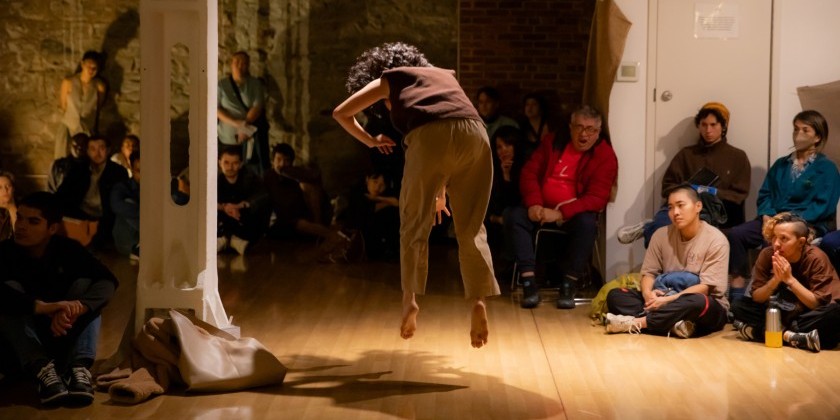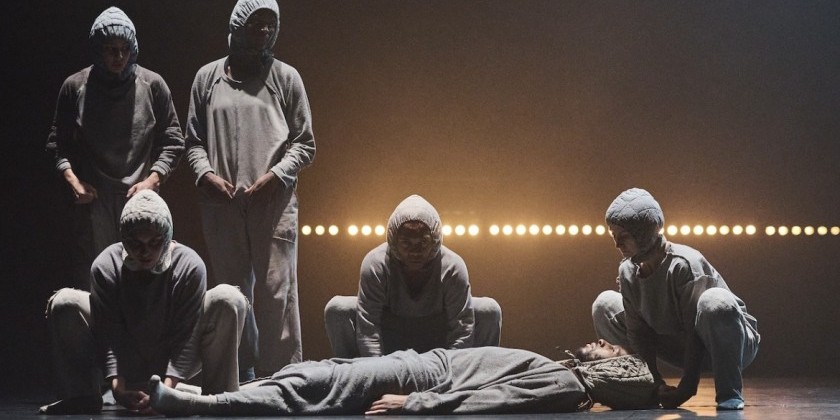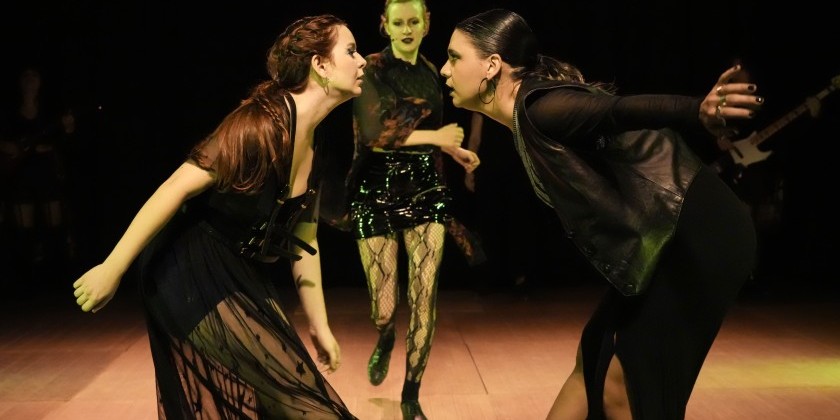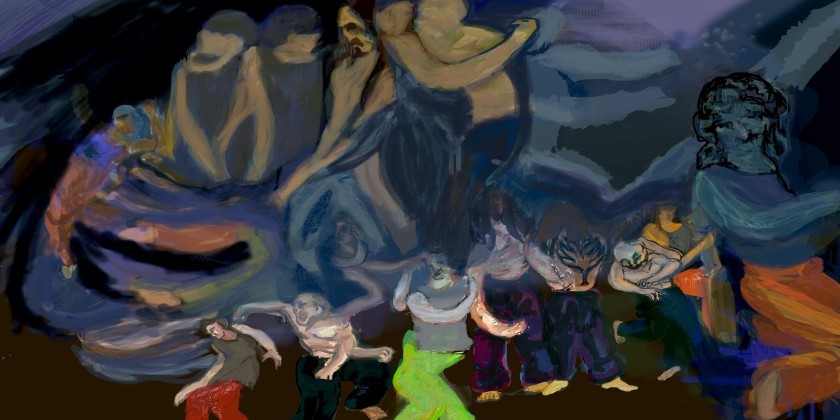AUDIENCE REVIEW: Dusan Tynek Dance Theatre, 13th Anniversary NYC Season

Company:
Dusan Tynek Dance Theatre
Performance Date:
July 8th 2016
Freeform Review: An Audience Review of Dusan Tynek Dance Theatre, 13th Anniversary NYC Season
Artistic Director/ Choreographer: Dusan Tynek
Executive Director: Geoff Chang
Performed by: Alexandra Berger, Gary Champi, Ann Chiaverini, Jessica Cipriano, Emily Gayeski, Joseph Hernandez, Sharon Milanese, Nicole Restani, Ned Sturgis and Timothy Ward
Costume Design: Anna-Alisa Belous
Lighting Design: Roderick Murray
Presented by: New York Live Arts
July 7th- 9th, 2016
New-York based choreographer Dusan Tynek presents a trifecta of group works at New York Live Arts, including Tethered Light, a world premiere. The afternoon demonstrates Tynek’s vast technical proficiency as a choreographer; his brand of dance, while familiar and digestible, incorporates distinctive stylistic elements that set it apart.
Alexandra Berger and Timothy Ward are standouts in Logbook, which opens the afternoon. The first half of the piece focuses on Berger, a soloist among four males. The men sweep the stage in linear unison, emerging to support her briefly before letting her continue her angular ditty. The relationship between Berger and Ward is at the center of the work’s dynamic; a constant flip-flop of gender roles is revealed in their swift, aggressive partnering. Sometimes the pair appears co-dependent, other times they are at odds. Karen Young’s tasteful, flattering costumes lend a finishing coat of polish to the work.
Romanesco Suite pries open a machine to reveal a vast infrastructure whirling under the surface. Like human Legos, the dancers create complex structures that evolve and disintegrate with mechanical fluidity. Romanesco Suite’s colorful costumes and simple, clean movement give a nod to the work of Merce Cunningham (not surprising, considering Tynek studied extensively with Cunningham). Tynek’s movement is classically rooted, but more adventurous than much of Cunningham's vocabulary, incorporating headstands and somersaults. The cicada-like buzzing of Dave Ruder’s sound design contributes to work’s mechanical feel.
The afternoon closes with a world premiere; in Tethered Light, a mysterious twinkling of lights on the dark stage turn out to be just LED lights strapped to the dancers' limbs. This image does not resonate throughout the piece except perhaps to conjure an initial image of outer space, an idea which is pushed forward by dark, metallic costumes. Tethered Light is sparse and spacious; one by one dancers catapult across the stage in a twirling rush of movement. Bryce Dessner’s “Tenebre” contributes to the airy, other-worldly feel of the piece, and is articulated adeptly in balletic, spritely footwork. Short and sweet, the work demonstrates Tynek’s immense capability at moving bodies through space, and evokes a sense of lightness, freedom, and ecstasy.
All three works are similar in structure and movement vocabulary- perhaps a bit more diversity could have lent flavor to the afternoon. While the work is not necessarily shocking or provocative, Tynek’s choreographic talent is undeniable. Duets flow seamlessly into unisons that last just long enough for us to feel satisfied, and Tynek sculpts the space with the adeptness of a master. His impeccable taste elevates the quality of the work that much more; the costumes are stunningly simple and flattering, enhancing the work without distracting us.
Tynek’s movement vocabulary is generally familiar to us, evolving from the clean lines and control of classical modern dance. Tynek puts his own brand on classicism, occasionally incorporating an angular gesture, a twisted wrist, or a bent elbow. The work has a timeless quality that assures that Tynek will continue to be a staple in New York dance.











